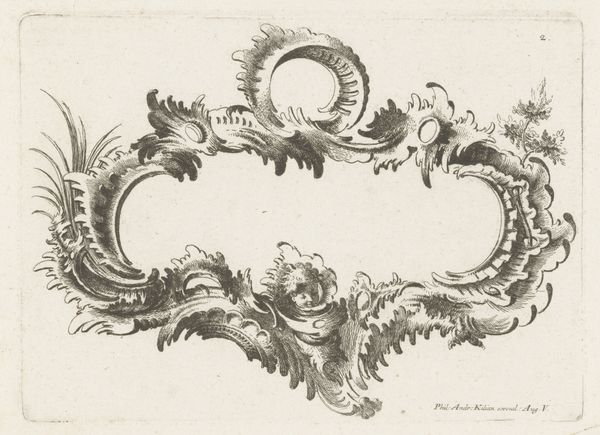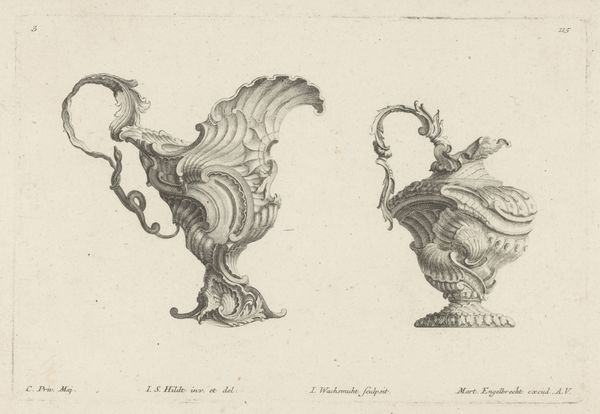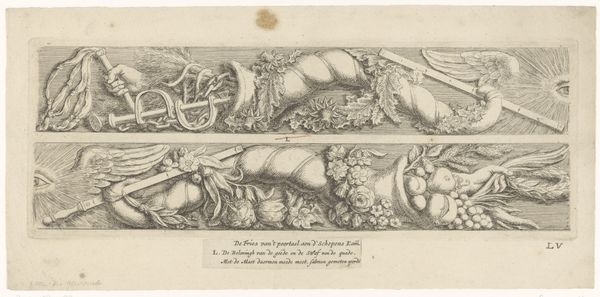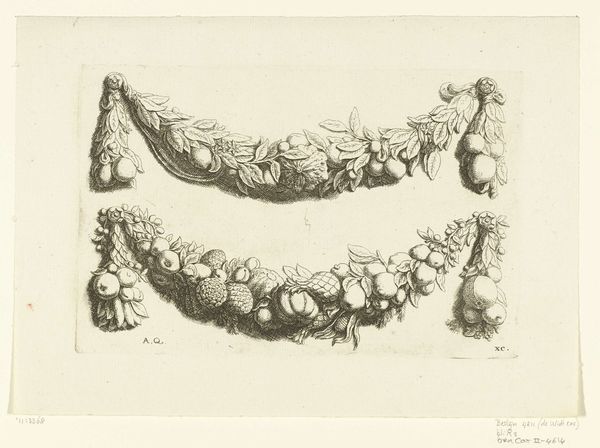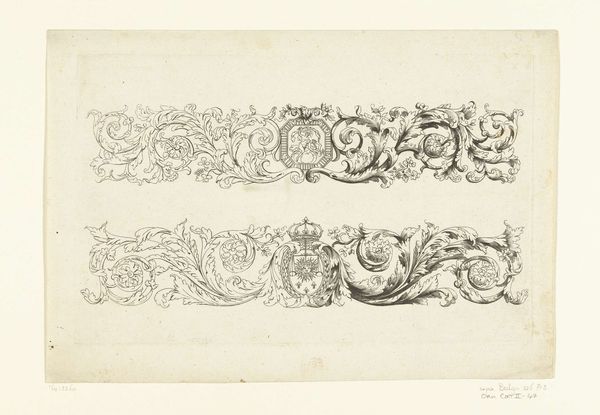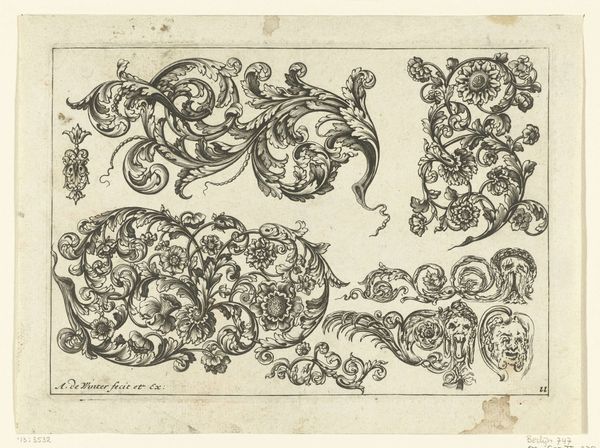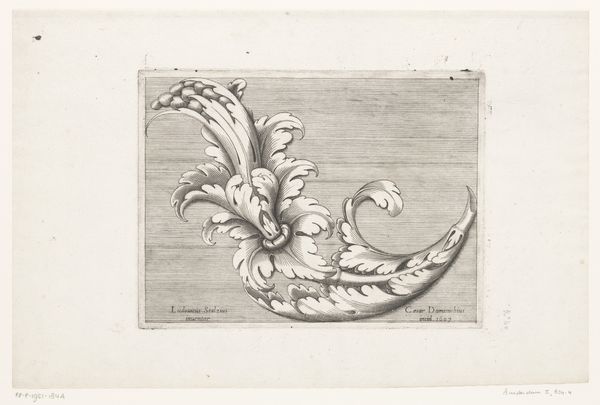
print, etching, engraving
#
baroque
# print
#
pen sketch
#
etching
#
decorative-art
#
engraving
Dimensions: height 136 mm, width 210 mm
Copyright: Rijks Museum: Open Domain
Editor: This engraving, "Guirlandes met schelpen en zeedieren," from 1719 by Hubert Quellinus at the Rijksmuseum, is a pair of festoons crafted from sea life. What strikes me is how these typically disparate, organic forms have been made regular, almost architectural. What do you see in this piece? Curator: I see more than just decoration, I see echoes. Consider the garland, traditionally woven of flowers and foliage. Quellinus replaces flora with fauna of the sea, turning an earthly symbol into something…aquatic. The baroque embraced elaborate ornamentation, so what’s conveyed by the selection of these specific images, repeated and intertwined? Editor: Well, seashells have always had symbolic meanings tied to birth and femininity… Curator: Precisely. And lobsters, crabs, and various mollusks – what emotional or cultural memories might they trigger? Remember, these symbols aren’t fixed; they shift in meaning depending on time and culture. Does this garland evoke a sense of abundance or perhaps the darker, less explored depths of the subconscious? Editor: I guess I hadn't thought about how a lobster could carry weight. The festoon makes me consider mortality… as in “dust to dust,” perhaps “sea to sea?” Curator: Indeed. These symbols work upon our memory – individual and collective. The artist taps into our inherited understanding of nature, cycles, and even our fears. This print shows a fascinating use of everyday imagery imbued with layered cultural weight. Editor: That makes me see these sea creatures in a whole new light, transformed from simple decorative motifs into meaningful cultural symbols.
Comments
No comments
Be the first to comment and join the conversation on the ultimate creative platform.

